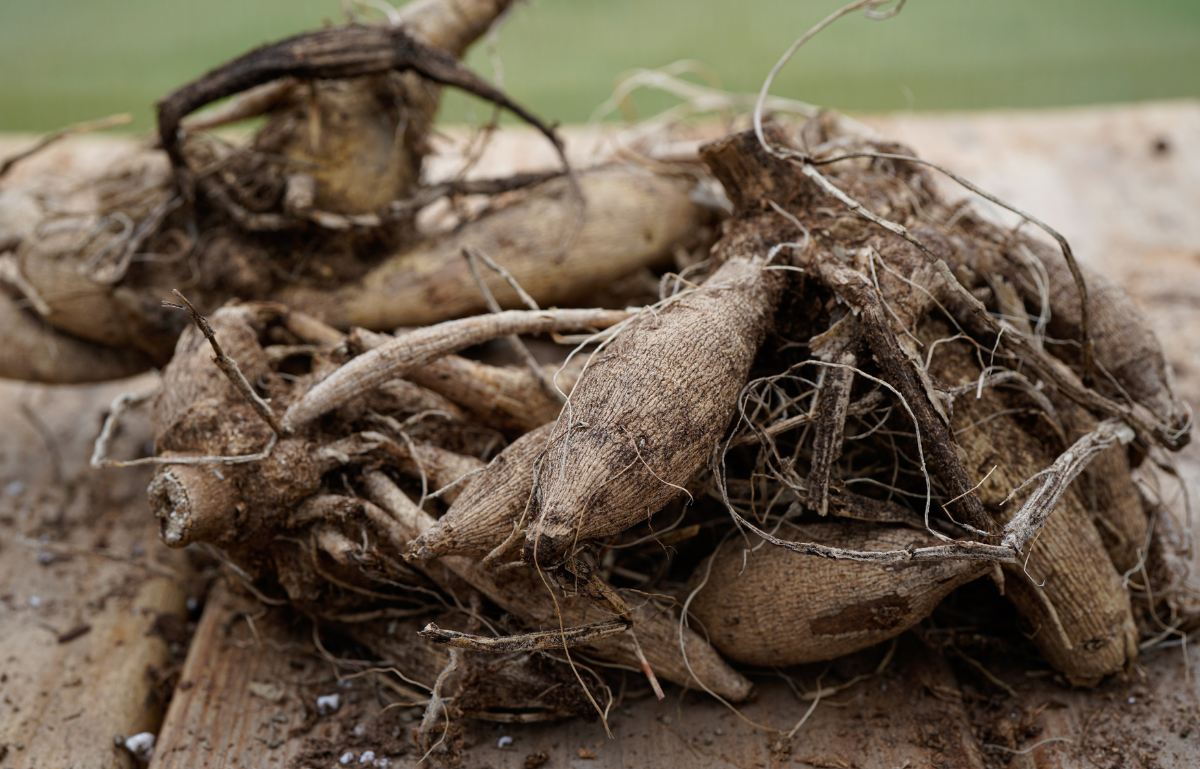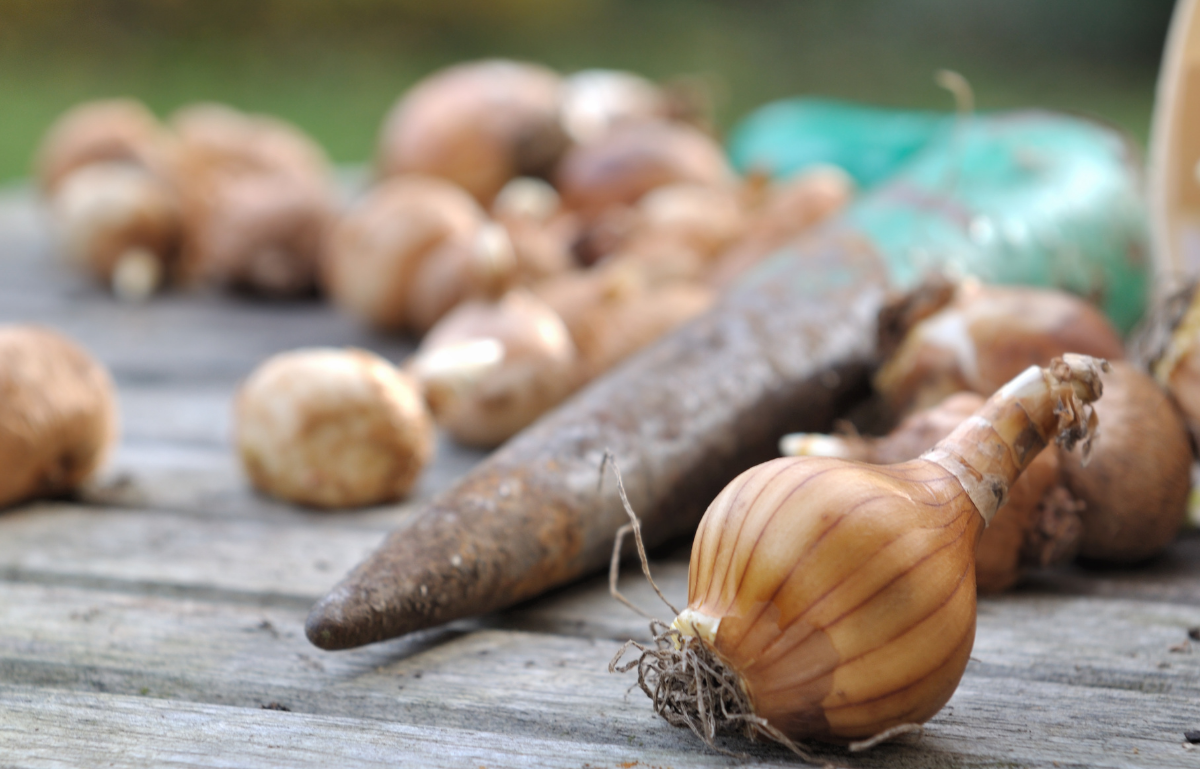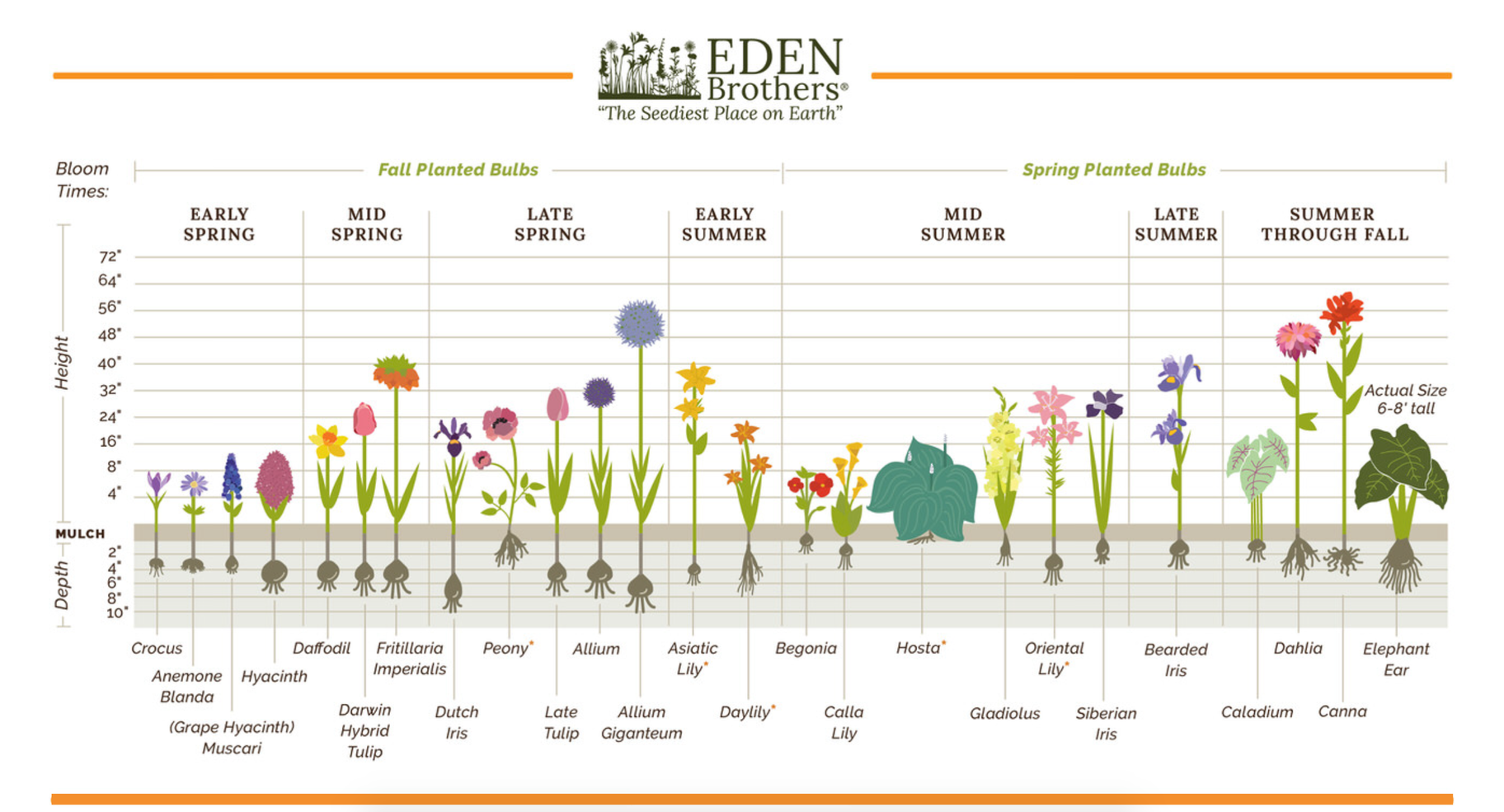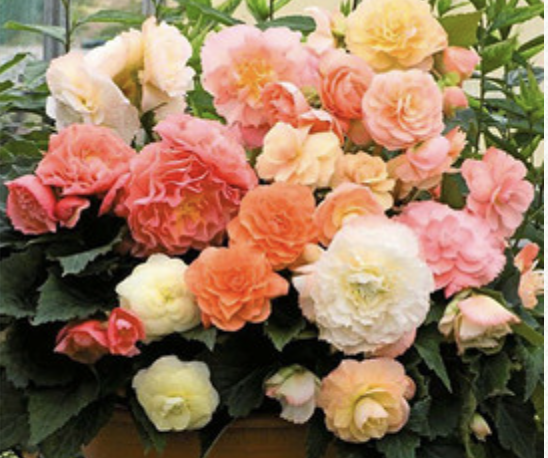Tulips, daffodils, dahlias and tall poppies on graceful thin stems, and who doesn’t love the extraordinary beauty of flowers grown from bulbs? I love investing in my garden’s future, which is why each year, I pop in a few bulbs or tubers or perennial roots. It’s easy to be seduced by the flowering plants at the local garden center or big box store. They cost little, they’re easy to pop into the ground, and they bloom quickly. But then they’re gone. That’s because for the most part, they are annuals, which are plants meant to last a season or two.
When you purchase an ornamental allium, Siberian iris, dahlia, or begonia tuber, you're for the most part buying a perennial, a plant that is a storage system that will last many seasons, often growing more robust as years go by.

Dahlias grow from humble tubers. Photo courtesy of Canva.
Looking at a flower bulb is such a different experience than looking at the flowers. Tulips, daffodils, ornamental alliums or dahlias look like botanical oddities that resemble onions or weird potatoes or even a clump of sad dangling roots with no soil. And you think: No good can come of this. They are all promise with no initial beauty — unless you understand what powerful botanical potential hibernates within such humble-seeming beginnings.

Daffodil bulbs look like shallots. Photo courtesy of Canva.
A bulb comes to you as a complete powerhouse of DNA — a botanical organ designed to transform once planted into the ground. If you do as I do and forget to mark where you put them six to eight inches deep in the soil, you find yourself essentially playing hide and seek with future delight. Months or even a year later, you see the telltale leaves and stems start to push themselves up out of the ground, sometimes through a plant you’ve placed more shallowly atop the bulb. It’s a unique pleasure.
After the bulb roots, then grows and flowers, it dies back to the ground and enters a period of dormancy during which it conserves all the energy it absorbed through sunlight in its leaves and stems. It waits until conditions are right to re-emerge. The cold we had recently was perfect for dormant bulbs already in the ground. The warmth of spring or summer will trigger the growing cycle again.

Seasonal planting and bloom chart for perennials. Image courtesy of Eden Brothers.
There are two seasons for planting these types of perennials. You plant in fall for spring bloom, and in spring for summer bloom. Because we live in a temperate climate, the seasons can get a bit muddled, so I rely on the seller to ship plants to me at the appropriate time. Sometimes I will receive roots or tubers months after I bought them.
When I look for bulbs, I do two things. First, I use a website that will help me select for my planting zone. Then I browse through the floral offerings much like looking at art. I buy what I respond to emotionally. But you might want a particular color scheme or style.
Two years ago, I planted tulips and ornamental alliums. The tulips never came up until this week. But the alliums grew to become fabulous spaceship-like creatures. This year, I put in perennial poppy roots and already they are becoming lovely clumps of leaves. Tulips are harder to grow in our climate because they need a long period of cold dormancy, but there are so many choices that are possible, from begonias and gladiolas to irises and peonies. My favorite site for dreamy browsing is Eden Brothers.

There are many more varieties of begonias available through web sites than at garden centers. Photo courtesy of Eden Brothers.
The Spruce: The 8 Best Places to Buy Flower Bulbs Online in 2022
Birds and Blooms: 9 Best Websites for Buying Flower Bulbs Online
